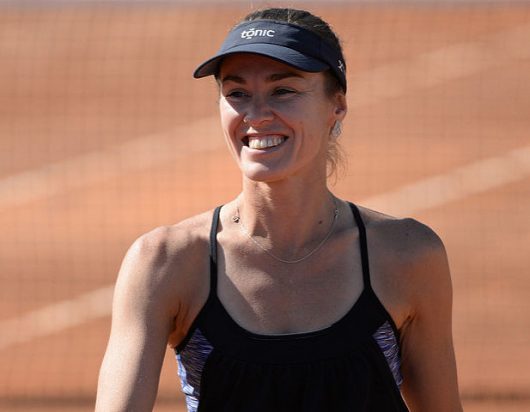4 Organizations Ending Poverty Through Sport

While the Wimbledon Tennis Championship has just ended, some of the world’s best athletes’ work doesn’t end on the court. Martina Hingis, a 2017 winner of the Wimbledon Doubles league, has promoted and discussed her ‘fourth career’ as an ambassador for Right to Play. Right to Play is one of many nonprofit organizations promoting sports to empower and educate children from poor backgrounds. Here are four organizations ending poverty through sport:
- Ball to All
Founded in Scottsdale, Arizona, Ball to All is an organization that provides soccer balls for underprivileged children. Founder Ori Eisen created the charity in 2003 after providing a friend, Nikolas Mangu, with five soccer balls before his travels back to his home country of Kenya. When Nikolas delivered the balls to a local school, the children celebrated the simple gift.Since the first delivery, Ball to All has delivered 9,426 balls to children of developing nations. Ball to All is one of the organizations ending poverty through sport by providing the basic tools for childhood development. Ball to All ambassadors believes that the organization provides children more than just a tool for play. They also believe, by taking part in sports, children are less likely to be negatively influenced by extremist groups, are made to feel important and are kept out of trouble. - Peace Players International
Peace Players International (PPI) uses basketball as a tool to provide unity, education, and inspiration to children around the world. The organization began in Northern Ireland to bridge the divides between religion, prejudice and racism through sport and create greater social cohesion. With great success, the organization spread to 15 countries by 2010 and provided specific programs for each local climate.In Jerusalem, where violence and political instability frequently reoccur, PPI uses sport to unite Arab and Jewish youth. However, in South Africa, the focus is more on providing safe and successful outcomes through sport for communities impacted by HIV/AIDS, drug and alcohol abuse or high unemployment.In a Sport for Development and Peace report, the U.N. states that for sports programs to be successful in creating change in developing countries, the sport must be all-inclusive. PPI does just that by focusing on the groups that would not usually have an opportunity to participate in sports leagues or groups that would not usually play together.
- Right to Play
Johann Olav Koss, the four-time Olympic medalist, founded Right to Play in 2000. He was inspired by a humanitarian trip to Eritrea, where the children wanted the same as any other child: to play.The organization uses voluntary coaches to implement sports programs educating children about leadership, health issues and employment opportunities. The programs spread across 20 countries and tailor to the specific scenarios of each country.By introducing after-school programs to underprivileged areas, Right to Play improved school enrollment and attendance rates. In Rwanda, students who took part in Right to Play’s programs maintained a 95 percent attendance rate in school. With this and many other successes, several governments recognize Right to Play as one of the organizations ending poverty through sport.
Every week, Right to Play reaches one million youths around the world with half of the children being young girls. By improving schooling outcomes and providing all-inclusive programs that close the gender gap, Right to Play improves opportunities for children in developing economies and promotes a healthy lifestyle.
- United Through Sport
The U.K.-based charity United Through Sport focuses on development through sport. With programs in Africa, South America and upcoming in Asia, United Through Sport provides two main programs to underprivileged youth. The Mass Participation Program provides thousands of children the chance to play whilst promoting health and education. Further, the Schools of Excellence program offers top-level coaching and schooling necessary for aspiring athletes.With direct coaching, disadvantaged communities obtain health benefits, emotional development and life skills such as decision making and leadership. The organization also delivers an interactive curriculum through sport on serious topics affecting the communities involved. The organization has taught more than 100,000 hours of HIV and AIDS prevention through the sports curriculum. Additionally, by providing professional opportunities that would not otherwise be available to the individuals of the program, United Through Sport provides a pathway for dedicated participants to receive scholarships at top local and international schools.United Through Sport works with more than 56,000 children and 90% of participants of its programs saw academic improvements. The organization has proven to not only provide the basics of child development but also the tools to better the future economic success of the individuals involved. Through its programs, United Through Sport stands as one of the organizations ending poverty through sport.
Sport is being used as a tool for development. While Ball to All, PPI, Right to Play and United Through Sport can’t solve all the issues of developing countries, sport can create positive change. By educating the young and promoting equality for all genders, religions, and creeds, the organizations form inclusive economies. The United Nations has stated that sport is a human right and essential for childhood development. By using sport to reduce poverty, individuals of every age can lead a healthier and more fulfilling life.
– Tess Hinteregger
Photo: Flickr
